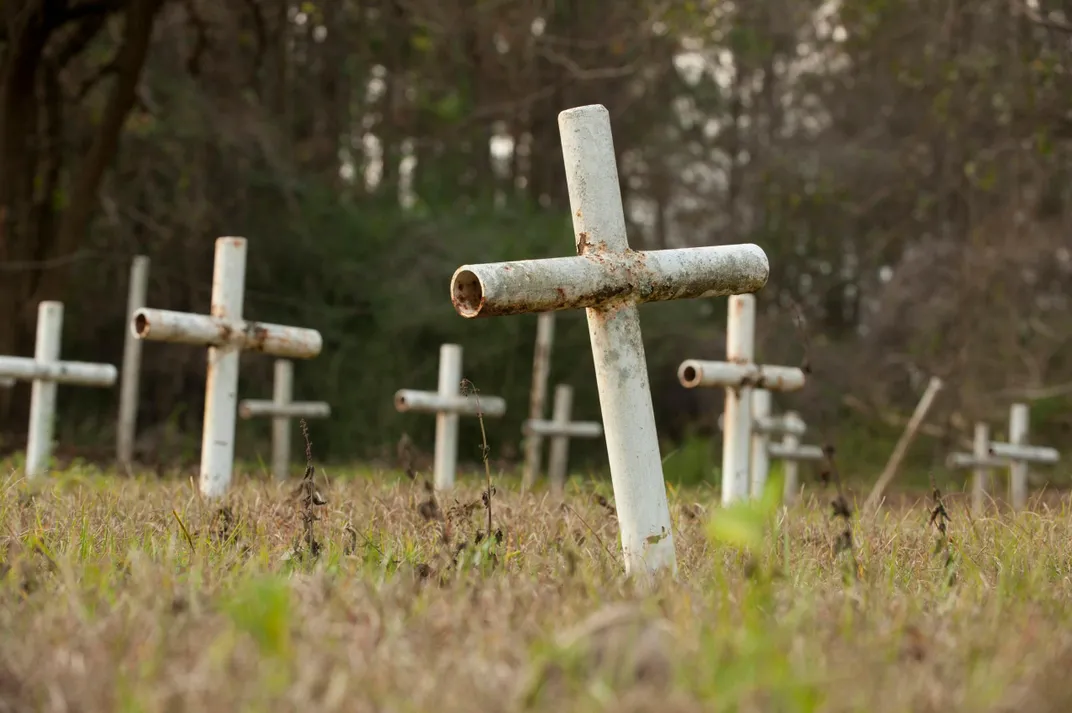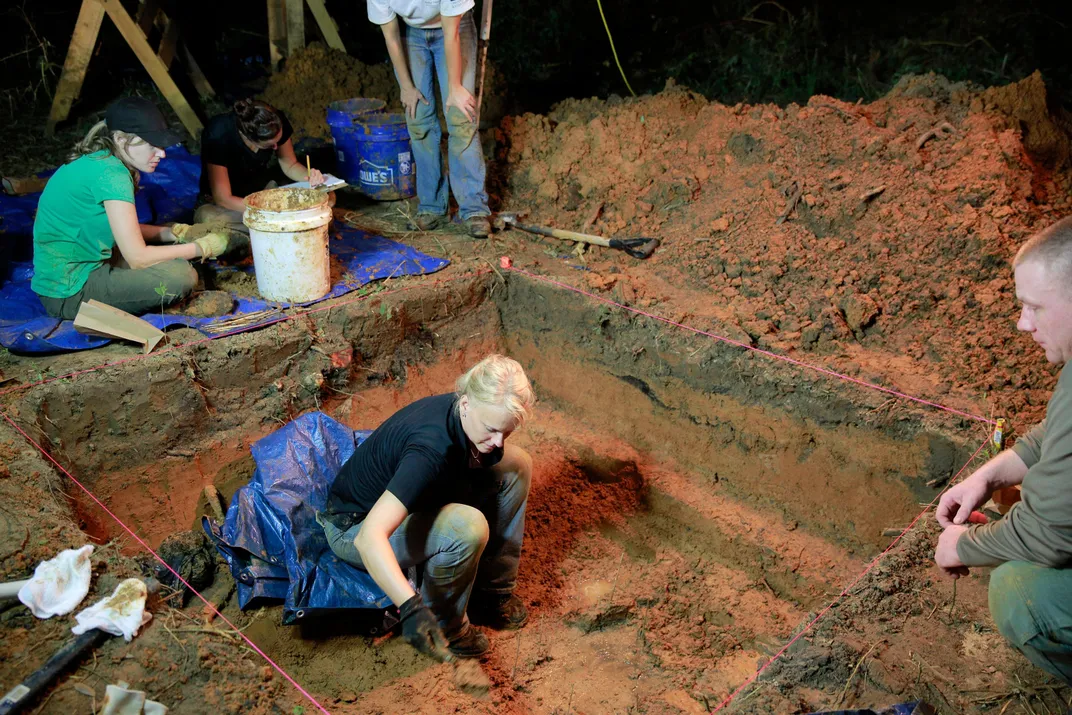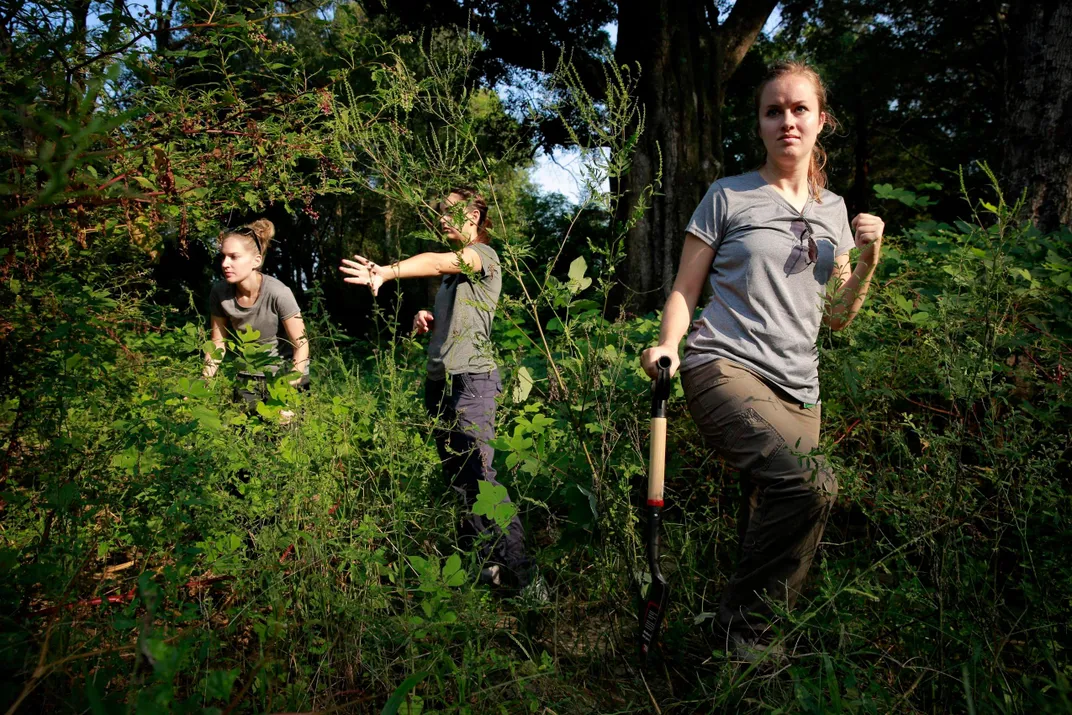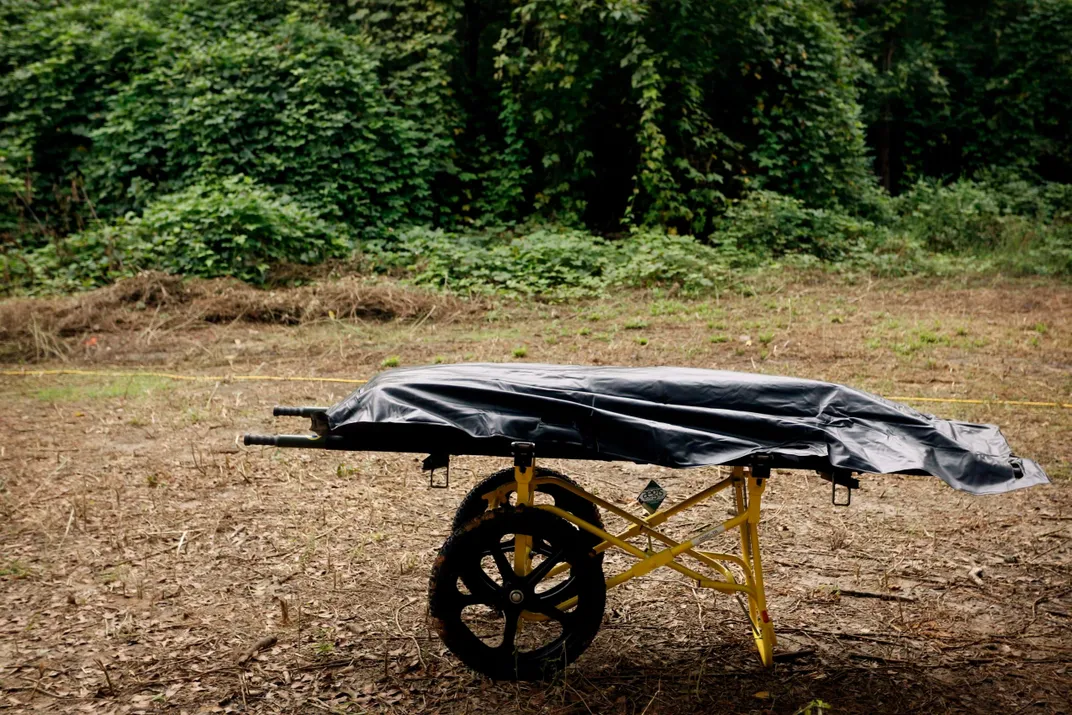Archaeologists Finally Know What Happened at This Brutal Reform School
The Florida School for Boys did anything but rehabilitate its students
Many of the human remains found at the Arthur G. Dozier School for Boys, Florida’s first juvenile detention center for boys, were buried over a century ago. But questions about their identities—and what exactly happened at this notorious school—have remained alive throughout the center’s brutal history. Who is buried in the school’s many graves, and how did they die?
Now, thanks to a new report by archaeologists and forensic anthropologists from the University of South Florida, some answers have finally emerged. NPR’s Laura Wagner writes that an investigation of the Marianna, Florida institution, which only closed in 2011, has revealed scores of marked and unmarked graves and sets of remains. In the report, researchers discuss work that revealed 55 on-site graves and 51 sets of remains. Using the remains they did find on site, they made seven DNA identifications and 14 other presumptive matches.
The report is the final step in a four-year process of excavation and archaeological exploration at the school. The detention center opened in 1897 and was initially run by governor-appointed commissioners, but the governor and cabinet of Florida later took control.
Its original mandate within Florida state statutes was to act as “not simply a place of correction, but a reform school, where the young offender of the law, separated from vicious associates, may receive careful physical, intellectual and moral training." The boys were to to be restored as honorable citizens that contribute to society.
But that mandate quickly proved false for the school’s inmates. Rather than a place for rehabilitation, the school became a site of horrific abuse. Between 1903 and 1913, write the USF team, a series of investigations found some of the school’s children shackled in chains, denied food and clothing, hired out to other people to work, and beaten. The youngest were just five years old.
Abuses continued over the next century. A group of former students eventually formed who called themselves the “White House Boys” after a blood-covered building where beatings were administered. The group provided a support system and a way for the men to share their stories.
The White House Boys were among a group of 100 former students who took part in a 2010 investigation that found that corporal punishment including paddling and beating was common at the school. Even so, no “tangible physical evidence” supported multiple allegations of rapes and other sexual assaults. Eventually, the school closed in 2011 after a Department of Justice investigation found ongoing excessive force, compromised safety and a lack of services at the school.
A history of education in Florida published in 1921 called the institute “a real reclamation school for delinquent boys,” but hundreds died during their time at the facility. The new report found that between 1900 and 1973, over 100 boys died at the Dozier school. The 1400-acre school was the site not only of a cemetery, but also of a number of unmarked graves. The investigation revealed that the school underreported deaths, including those that occurred for reasons like gunshot wounds and blunt trauma. Other deaths took place due to things like fire and influenza.
Many of the unmarked burial sites studied are thought to be of black students, who were segregated at the school. The team found that three times as many black students died and were buried at Dozier than white students, and that some of those boys were incarcerated for non-criminal charges like running away and incorrigibility. Black boys were less likely to be named in historical records, as well, reflecting the grim realities of reform school life in the segregated South.
Reform schools for youth found guilty of crimes ranging from murder to profanity and “incorrigibility” were common at the turn of the century. A 1910 census of juvenile crimes shows that the Florida school was just one of hundreds across the country. That year, 72 children per 100,000 were institutionalized for crimes. Though that number is lower than today’s rate of 173 juveniles per 100,000, the population was only 92 million—28 percent of today’s population of about 322 million.
The new report does not allege any criminal wrongdoing at the Florida school—it only talks about finding and identifying bodies. The team writes in a release that it will push for a plan for burying unidentified children, restoring remains to families and locating surviving family members of the dead. Perhaps now that more is known about life and death at the school, restitution and restorative justice can begin.
Editor's note, January 26, 2015: This article was updated to clarify the number of graves, sets of remains, and confirmed identifications with DNA.
/https://tf-cmsv2-smithsonianmag-media.s3.amazonaws.com/accounts/headshot/erin.png)





/https://tf-cmsv2-smithsonianmag-media.s3.amazonaws.com/accounts/headshot/erin.png)